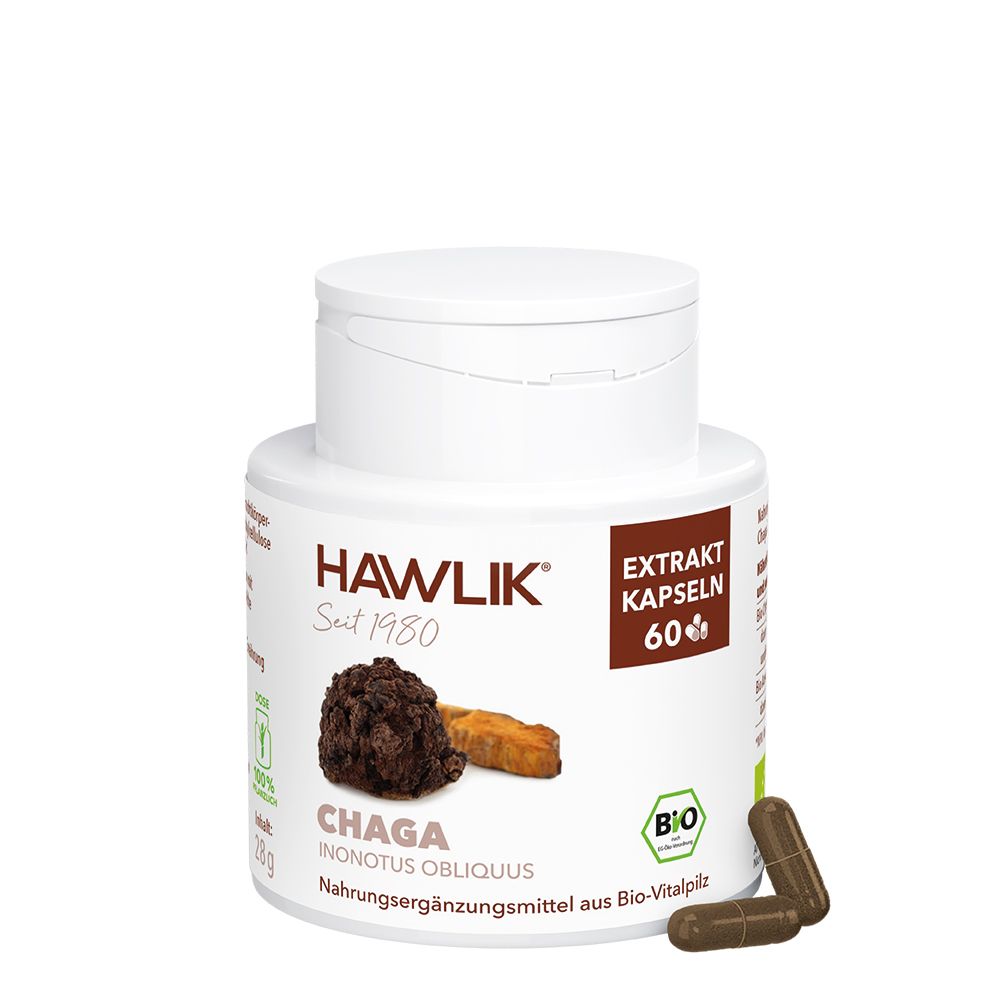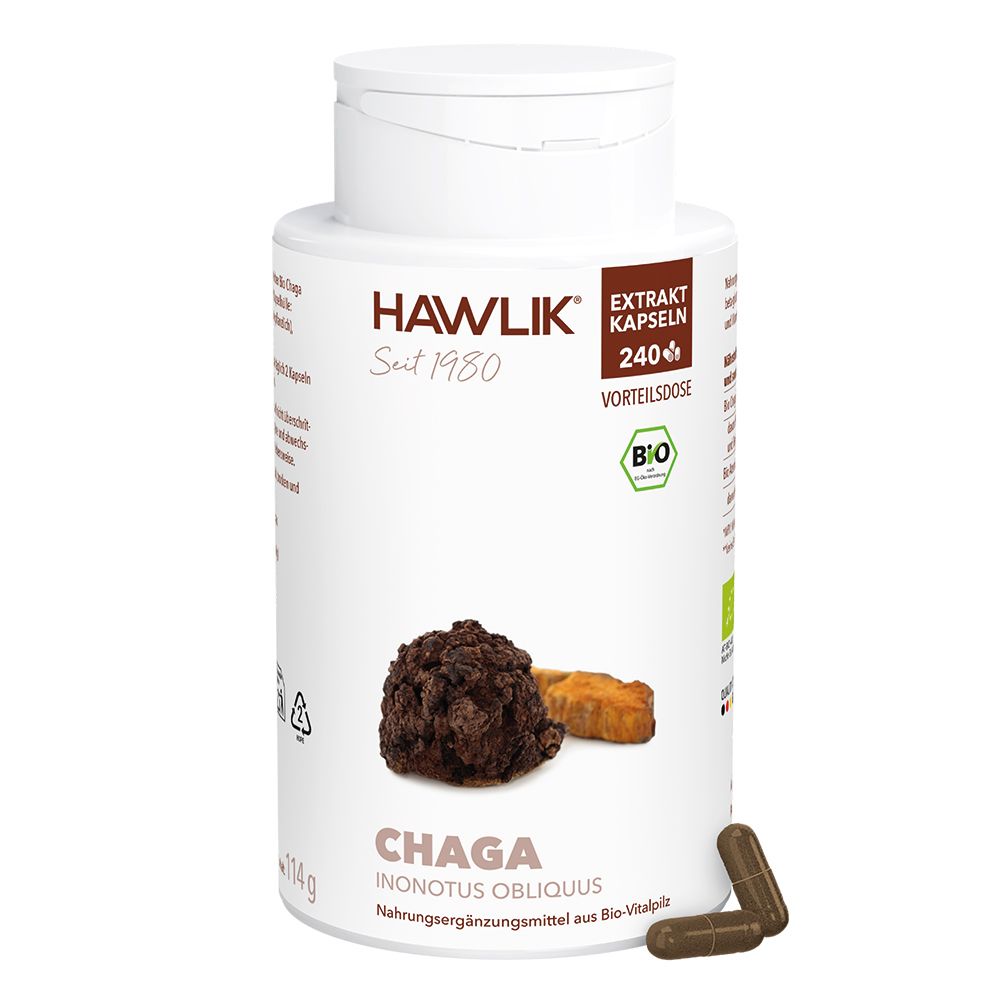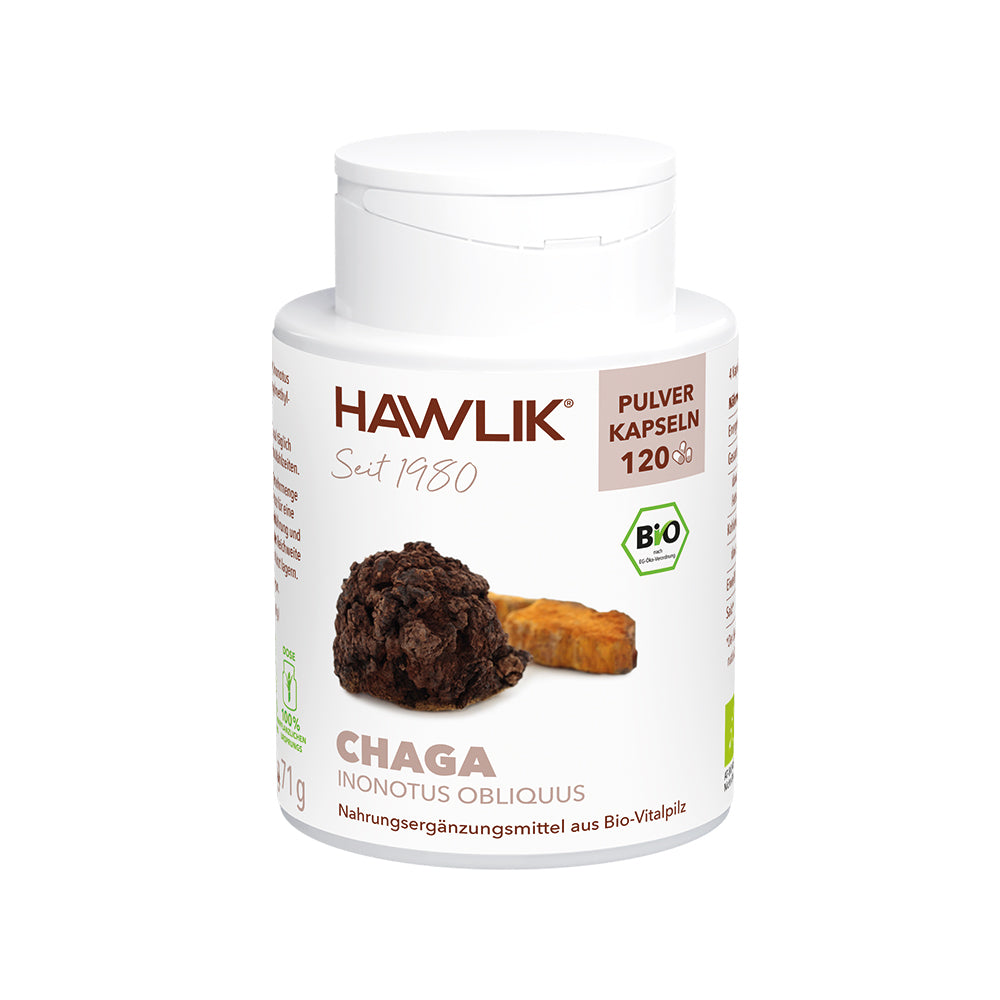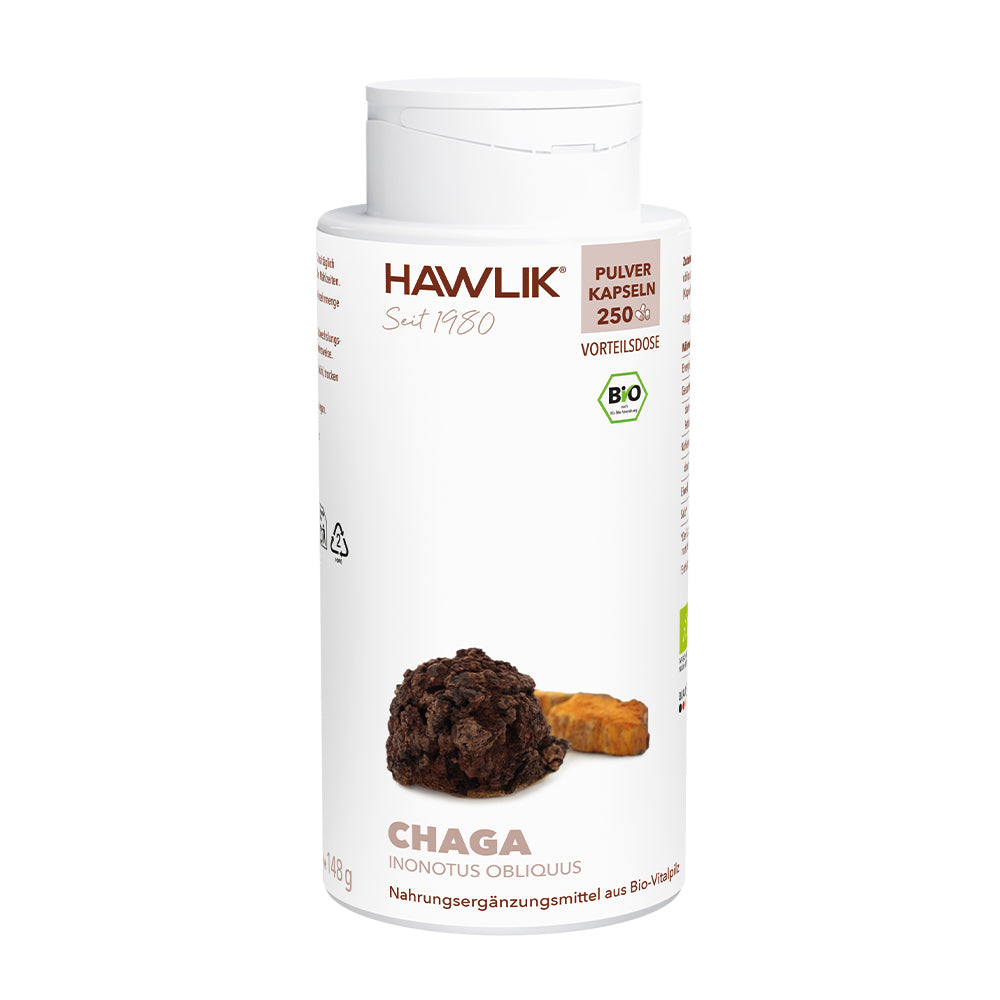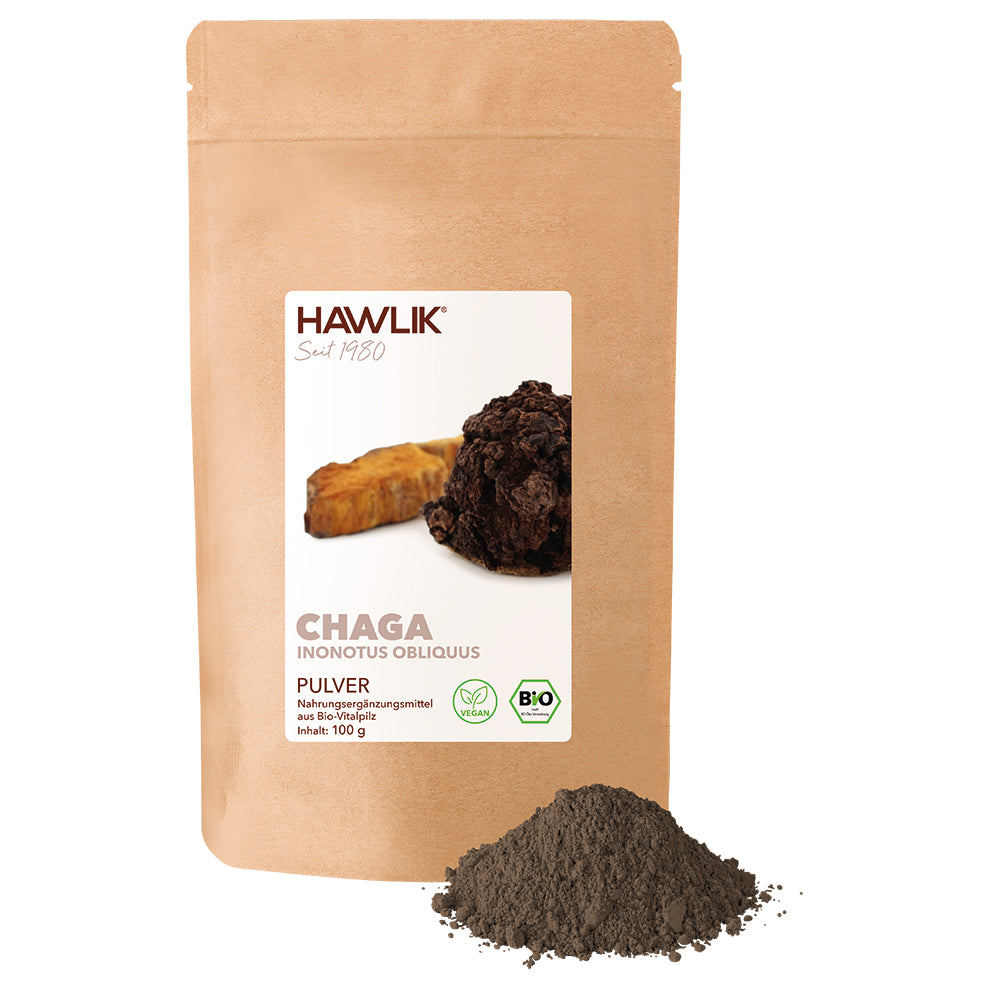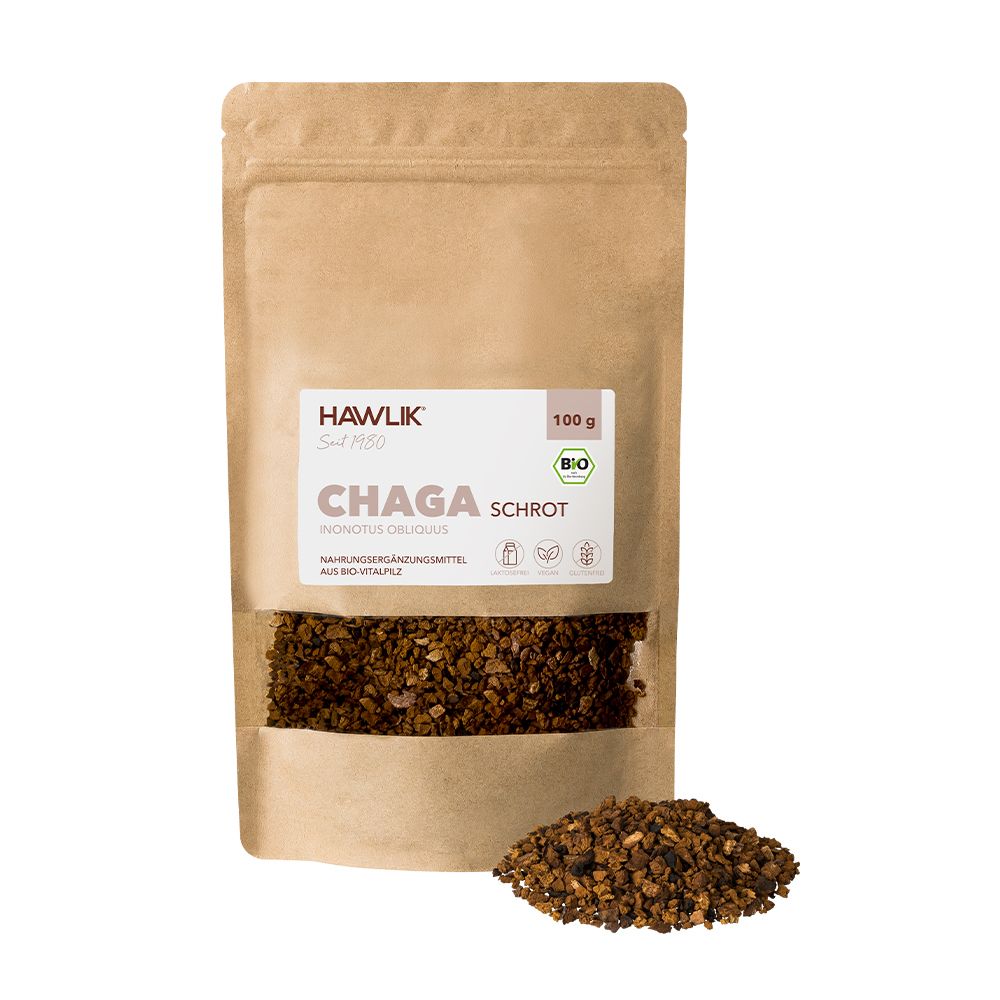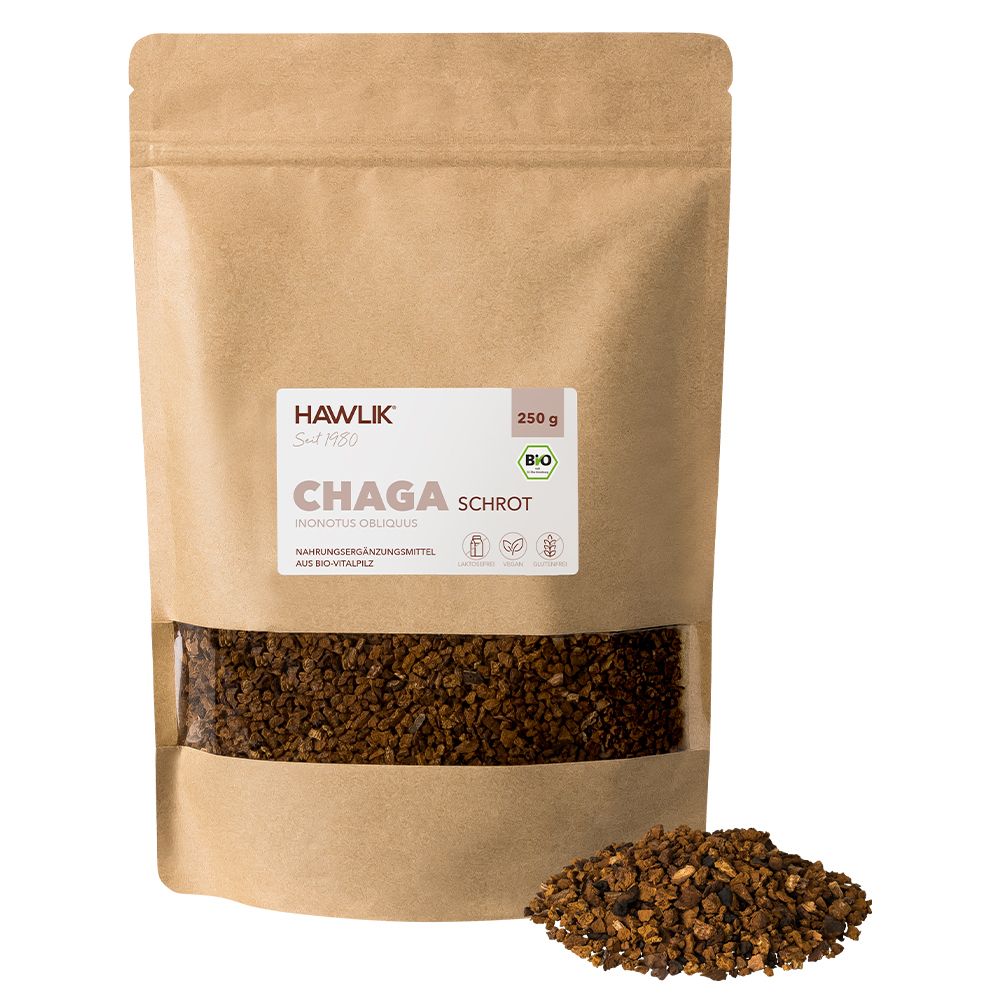Origin, cultivation and use of the Chaga mushroom
The inhabitants of Siberia have also been using Chaga tea as a dietary supplement for many centuries. In German-speaking countries, the Chaga or Tschaga mushroom is primarily known under the name "Schiefer Schillerporling" (Slate Ibis Mushroom). Other names, although much less common in Europe, include Fungus betulinus, Kabanoanatake, Hua Shugu (Bai Hua Rong), and Hua Jie Kong Jun. Chaga may be the "king of medicinal mushrooms" – but its appearance doesn't necessarily suggest this: The tree-growing mushroom resembles knobbly, brown to black, irregularly furrowed bark. With age, the tubers of the Schiefer Schillerporling become so dark that it gives the impression that the tree has been burned in the affected areas. Chaga or Schiefer Schillerporling is native to the forests of Russia, Poland, and Scandinavia. It also grows occasionally in Canada and Japan, but is very rare in Central Europe. As a parasite, the slate slate polypore infests deciduous trees – especially birch trees – causing severe white rot. The slate slate polypore is one of the few mushrooms that cannot be cultivated, so its occurrence is limited to the wild. Accordingly, our Chaga comes entirely from wild collection. As a medicinal mushroom, we only process Chaga tubers that have grown on birch trees. As an edible mushroom, Chaga is of no importance. However, in the areas where it is widespread, it has been drunk in dried and crushed form as an infusion for centuries, as its beneficial properties were recognized there early on. The slate slate polypore is primarily consumed as a tea, but Chaga infusion with coffee is also becoming increasingly popular.
Ingredients of the Chaga mushroom
It is not for nothing that the slate oyster mushroom is also called the "king of medicinal mushrooms." It contains a unique combination of different ingredients, including various polyphenols and polysaccharides, which are considered valuable antioxidants. Of particular note are the beta-glucans, which are found in high concentrations in Chaga. Overall, the antioxidant substances contained in Chaga have proven to be highly water-soluble, making them particularly readily available to the human organism. Various tannins, flavonoids, and minerals—particularly potassium, sodium, and magnesium—also make Chaga a nutrient powerhouse. A special feature of Chaga is the vital nutrient betulin, which the mushroom presumably synthesizes from its host tree, the birch. Over the long growth period of Chaga, betulin, which is often the subject of scientific research in the form of betulinic acid, apparently accumulates in the mushroom.
Chaga: You can buy these dosage forms from Hawlik
As with all medicinal plants, the concentration of ingredients in untreated mushrooms can vary greatly. Therefore, standardized processing is recommended for the use and dosage of Chaga, as is the case with Hawlik medicinal mushroom products. Because Chaga is harvested in the wild, we at Hawlik conduct comprehensive analyses to ensure that the ingredients are not affected by environmental pollution. This way, you can be sure that even when harvested in the wild, pure nature ends up in our products. You can purchase the Slate Schillerporling in the following dosage forms in our shop:
Chaga extract capsules
Highly concentrated dosage through extraction to 30% polysaccharides. With an extra dose of vitamin C. Each capsule contains 300 mg of medicinal mushroom extract and 55 mg of Ester-C® (40 mg vitamin C content). For our Chaga extract, we use a patented extraction process to release the polysaccharides from the chitin walls of the whole mushroom, making them more readily available to the body.
Application and dosage: Take two Chaga extract capsules twice daily with plenty of liquid at meals.
Chaga tea (crushed)
Our Chaga meal is ideal for preparing as a hot water extract—enjoy it neat as a tea or in combination with coffee, herbs, spices, or fruit. Directions and dosage: Pour 2-4 tablespoons of Chaga meal into 1 liter of hot water and let it steep for about 15 minutes. The more Chaga meal you use, the more bitter the tea will be!
